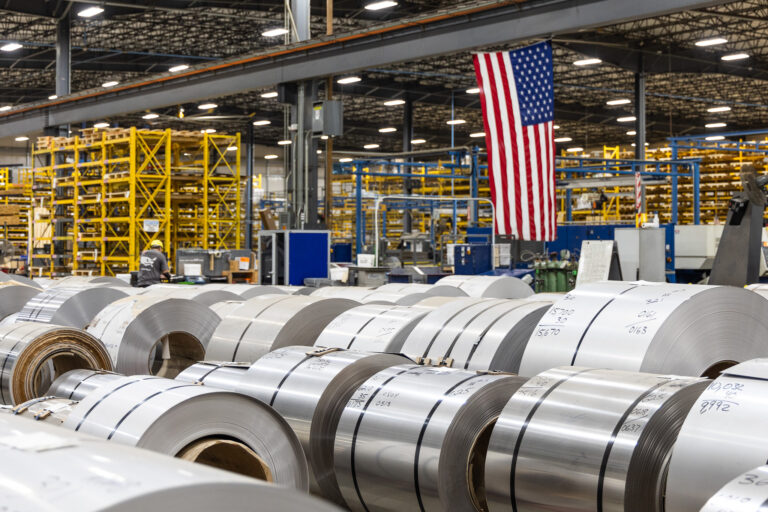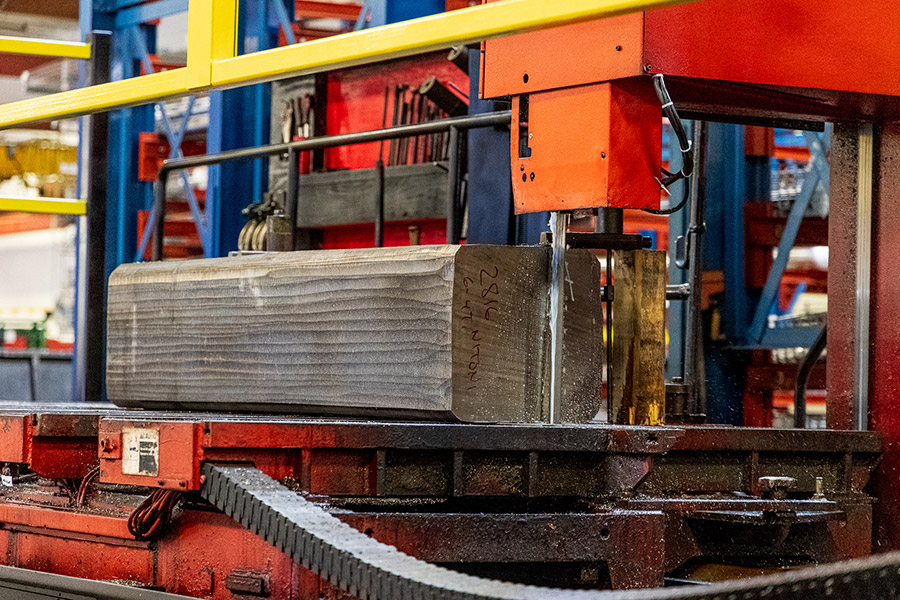TITANIUM
6AI-4V
6Al-4V titanium is the most widely used of all the alpha-beta titanium alloys. It is typically used in the annealed condition, at service temperatures through 750°F. However it may be heat treated for high strength in sections under 4″ thick. Hardenability is limited and sections over one inch may not develop full properties. Ti 6Al-4V is welded with matching or with ELI filler wire.
Mill anneal: 1300-1450°F 2 hours, air cool. Recrystallization anneal bar for better ductility and fatigue strength, 1750°F 2 hours, furnace cool.
For maximum fracture toughness and SCC resistance: Beta anneal 1950°F 1-2 hours, water quench. Then age 1150-1300°F 2 to 4 hours, air cool.
For maximum strength: solution-treated and aged (STA) condition is: For sheet, 1675-1725°F 5 to 25 minutes, water quench. Age 975°F 4 to 6 hours, air cool. For bars and forgings, 1675-1725°F 1 hour, water quench. Age 975-1025°F 3 hours, air cool.
For increased fracture toughness, but lower tensile strength: precipitation treat (overage) 1150-1250°F 4 hours, air cool. Stress relief annealing is commonly 1000-1200°F 1 to 4 hours, air cool.
Ti 6Al-4V is resistant to general corrosion but may be quickly attacked by environments that cause breakdown of the protective oxide. These include hydrofluoric (HF), hydrochloric (HCl), sulfuric and phosphoric acids. Inhibitors may help for the last four but not for HF. Ti 6Al-4V resists attack by pure hydrocarbons, and most chlorinated and fluorinated hydrocarbons (provided water has not caused formation of small amounts of HCl and HF).
Ti 6Al-4V is susceptible to chloride stress corrosion cracking (SCC), although being among the better of the titanium alloys in this regard. For marine environments silver plated bolts are not used, as silver bonds easily with chlorine in this environment. Ti 6Al-4V is also susceptible to SCC in environments such as methyl alcohol, red fuming HNO3, and N2O4. In the case of red fuming nitric acid, the problem is limited to environments containing less than 1.5% water, or more than 6% NO2. Failure in N2O4 has occurred when oxygen and chlorides were present as impurities.
- High strength to 600°F
- Excellent general corrosion resistance
- High strength-to-weight ratio
UNS: R56400
W. NR.: 3.7164, 3.7165
ASTM: B 265, B 348, B 861
ASME: SB 265, SB 348, SB 861
AMS: 4911, 4928, 4967, 4935, 4920, 4965
- Turbine blades, discs and rings
- Aircraft structural components
- Weapons structural components
- Firearms production
- Fasteners
- Medical and dental implants
- Hand tools
- Sporting equipment
- Chemical process equipment
Share This Page










